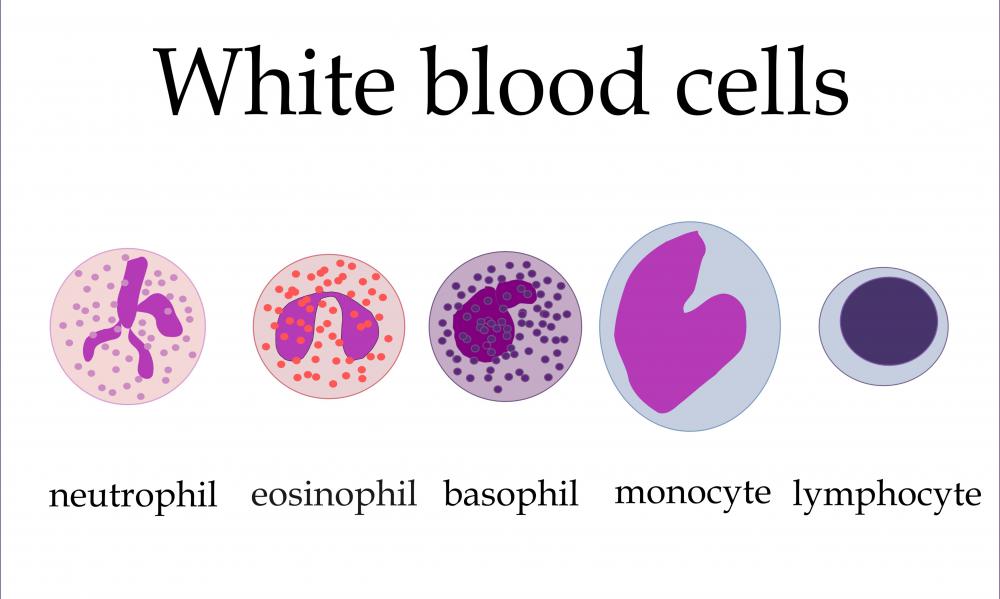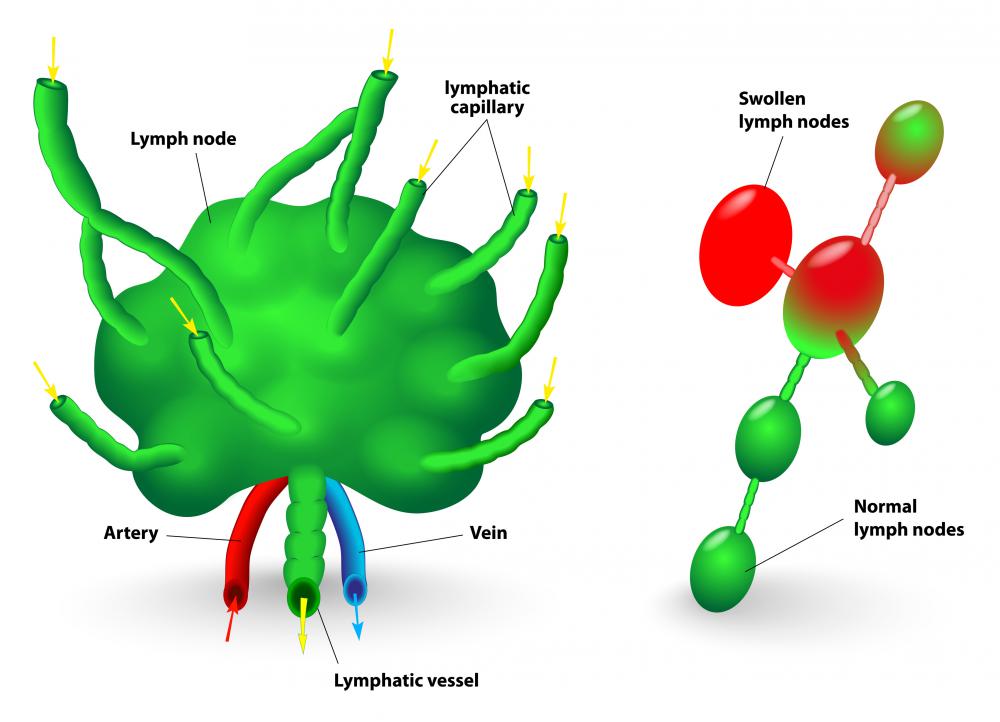At TheHealthBoard, we're committed to delivering accurate, trustworthy information. Our expert-authored content is rigorously fact-checked and sourced from credible authorities. Discover how we uphold the highest standards in providing you with reliable knowledge.
What are Lymphatic Vessels?
Lymphatic vessels, or simply lymph vessels, are tubular structures responsible for carrying lymph throughout the human body, much as blood vessels convey blood. These vessels are a vital part of the lymphatic system, which supports the human immune and circulatory systems, filters toxins and waste products from somatic cells and tissues, and aids in the production of certain protein molecules. The lymphatic system has a one-way cycle that moves lymph upwards through the human body, and it includes two kinds of vessels: afferent and efferent. The afferent vessels are similar to veins in that they transport fluid into the lymph nodes, while the efferent vessels are similar to arteries, carrying filtered lymph away from the lymph nodes.
The solution that runs through these vessels, called lymph, begins in the circulatory system as blood plasma and then is converted to a fluid known as an interstitial or intercellular fluid. This fluid is responsible for delivering hormones, oxygen, and various nutrients to cells throughout the body. As it leaves the cells, it bathes them, taking waste products away with it. About 90% of this fluid is then reintroduced to the circulatory system. What remains in the interstitial fluid is the lymph.

The lymph is conveyed into the lymphatic system through vessels called lymph capillaries. These are comparable to the capillaries found within the circulatory system, but they are larger in circumference and have a unique one-way structure, meaning that lymph cannot pass out of the vessels the same way it entered. The lymph capillaries eventually form a complex network of larger vessels that are the lymphatic vessels.

These vessels are also one-way structures; like veins in the vascular system, they have valves that prevent lymph from flowing backward. After passing through the lymph capillaries, the fluid is introduced into the afferent lymphatic vessels and then flows into the lymph nodes, which are small, round organs located throughout the body. The nodes filter waste from the fluid, while cells called lymphocytes kill any viruses or bacteria found within it. Lymphocyte activity is what causes the lymph nodes to become swollen when a person is sick, a condition commonly referred to as "swollen glands."

After the lymph has been filtered by the lymph nodes, it passes into the efferent vessels. These lymph vessels come together in large groups sometimes referred to as a lymph trunk. They drain the filtered fluid into one of two lymph ducts, which are very large lymphatic vessels. The thoracic duct is the largest of these vessels in the human body and is responsible for draining the majority of the body's lymph, while the smaller right lymphatic duct only drains lymph from the upper right side of the body. After passing through the lymphatic ducts, the fluid enters vessels known as the subclavian veins, which transport it back to the circulatory system.
AS FEATURED ON:
AS FEATURED ON:
















Discussion Comments
To Galen: the fluid transported by the lymph vessels is lymph, which is returned to the cardiovascular system. The small organs associated with lymph vessels are lymph nodes. Hope this helps, good luck.
I want to ask what is the relation between the lymph vessels and edema. Thanks a lot.
The lymphatic system is made up of lymph (a fluid that resembles plasma), lymphatics vessels, and lymphoid organs. Lymph can be thought of as "leftover" fluid in the tissues because it is derived from blood passing through the capillaries.
How is lymph produced you might ask? Blood flowing slowly through capillaries is under enormous hydrostatic pressure. This pressure causes much of the plasma to become forced, into the surrounding tisssues to supply them with oxygen and nutrients. Once the fluid has delivered its "cargo" to the surrounding tissues, it is forced back into the capillaries and the venous system via capillary osmotic pressure.
Of the approximately 24 L of fluid that leave the capillaries daily, pressure in the blood vessels can return only 20.4 L to the circulatory system. The 3.6 L of fluid remaining in the tissues is lymph.
Hi -- thanks for all this information. I just wanted to ask you a little more about the lymphatic system in general.
I have recently become very interested in lymph drainage after experiencing a serious lymph node swelling in my neck a few weeks ago. Thankfully it went down after treatment, but my doctors are still trying to figure out exactly what caused it, so I'm doing my own research while waiting for results.
Could you perhaps point me to some more information about the lymphatic system in general, especially things that can cause swollen lymph nodes? Thank you!
Lymphatic drainage is one of those things that is kind of gross to think about, but much, much worse if you have to think about it because it stops functioning.
I'm not even talking about finding cancer in lymph nodes -- I'm talking about all the crazy swelling and pain that you can get if your lymph system gets out of whack.
The one that I think would be the worst is elephantiasis. Not only do you swell up like a balloon, but your skin gets thick and painful too.
So the next time you're stuck counting your blessings, give thanks for your well-functioning lymphatic collecting vessels!
Hi -- I am in desperate need of some biology homework help...this first year seminar is really embarrassingly difficult!
Can anybody help me out with a few questions? Here they are:
"The fluid transported by the lymphatic vessels is called..."
Is it just lymph? I have looked at a few different sites, and I can't find a common answer.
OK, next one: "Small organs associated with lymphatic vessels are termed..."
Anyone? I am totally desperate here, somebody please help me out!
Post your comments